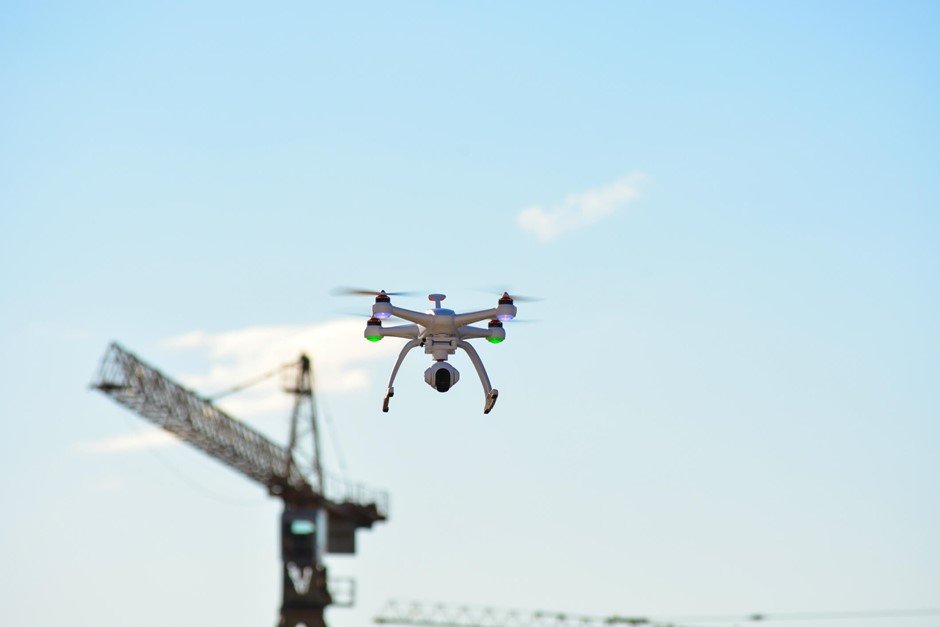6 Workplace Safety Technologies Every Company Should Know About
4 min readTechnology has changed at a breakneck pace. It’s happened so fast, in fact, that few workplaces have entirely caught up. Unless you work at Google, I’m willing to bet your tech could use an update.
That’s especially true when it comes to safety. We’re quick to adopt tech that makes us more productive and helps us reach more customers, but we’re sometimes a little too reluctant to invest in safety.

There’s no time like the present to change that. Here are six workplace safety technologies that you can’t afford to overlook.
1. Online Training
OSHA has a list of required workplace safety training topics, and it can be overwhelming to try to cover them all. It is hard to arrange a time that is best for everyone in any given department to come and participate in safety training. And then there are all those workers who don’t show up, so you have to hold backup training sessions as well.
Computer-based training is a great option for companies to meet OSHA training standards. But above that, it can ensure every single worker gets exactly the training they need.
Online training has another advantage. It can make testing your workers’ knowledge of training topics much easier. That way, you can know not only that your workers learned what they needed to, but that it stuck.
(Find out overcome-language-barriers-in-safety-training/)
2. Wearable Technology
If you work out, you’ve probably heard of wearable tech. You might even be wearing a fitness tracker around your wrist right now. They’ve become popular ways to keep track of your progress in reaching your fitness goals and monitoring your vitals, but wearable devices can also enhance workplace safety.
In an office setting, wearable devices can alert an employee that they’ve been sitting for too long, or remind them to take a quick break and a brief walk to prevent an ergonomic injury.
But wearables aren’t just for desk jockeys. There are hats that can measure a construction worker’s fatigue, or vests that light up when a worker wanders into an unsafe area.
Companies are also starting to realize that they can benefit from wearable GPS devices. Being able to pinpoint an employee’s location at all times can not only help deal with productivity issues and accountability but can also make an important difference during emergency rescue operations.
3. Voice Data Collectors
Voice data collectors aren’t the fanciest bit of technology, but it can eliminate the need to carry around a clipboard to write down information. Using a headset or similar device to keep your hands free can allow you to give real-time reports during inspections and other important safety checks and routines.
4. Drones
Camera-equipped drones can get a close-up view of virtually any area, including those that are difficult for workers to access. By eliminating the need to physically send someone into a dangerous area to perform a check, you are keeping workers out of harm’s way.
This is a great solution for hazardous and confined spaces, as well as extreme heights.
5. Smart Glasses and Body Cameras
Body cameras made the news when police officers started wearing them, but they have uses beyond law enforcement. They can, for instance, assist industry workers by sending live feedback to a supervisor or coworker. Workers out in the field can get better remote assistance by using a live feed to show exactly what they’re dealing with instead of trying to describe it over the phone.
Wearable cameras can also be used to keep a record in case something happens. When there’s an incident, it can be instructive to replay the video and see exactly what happened. And while you can collect testimonies after an accident, not every critical detail will be noticed or remembered.
6. Record Keeping and Auditing
Record keeping and auditing apps aren’t as sexy as drones or wearable devices, but they can make a big difference for your workers’ safety.
These apps have had a profound impact on the way we gather and analyze safety data. Instead of scribbling down information on paper and then sorting through documents to analyze it, most of the process has been automated.
(Learn about the safety-management-record-keeping/)
Safety management software helps you know what kinds of data to collect, what to look for, and can even help you analyze it. This software makes the process easy enough so that someone without a lot of experience or an extensive safety background can still get the job done without missing anything important.
Summary
It doesn’t make sense to buy up every new gadget that hits the store shelves. But there’s a lot of techs that provide you a simple, cost-effective way to keep your workers safe. If you’ve been doing safety the same way for years, you’re due for an upgrade. Look into these options and what they can do for you and your workers.




1 thought on “6 Workplace Safety Technologies Every Company Should Know About”